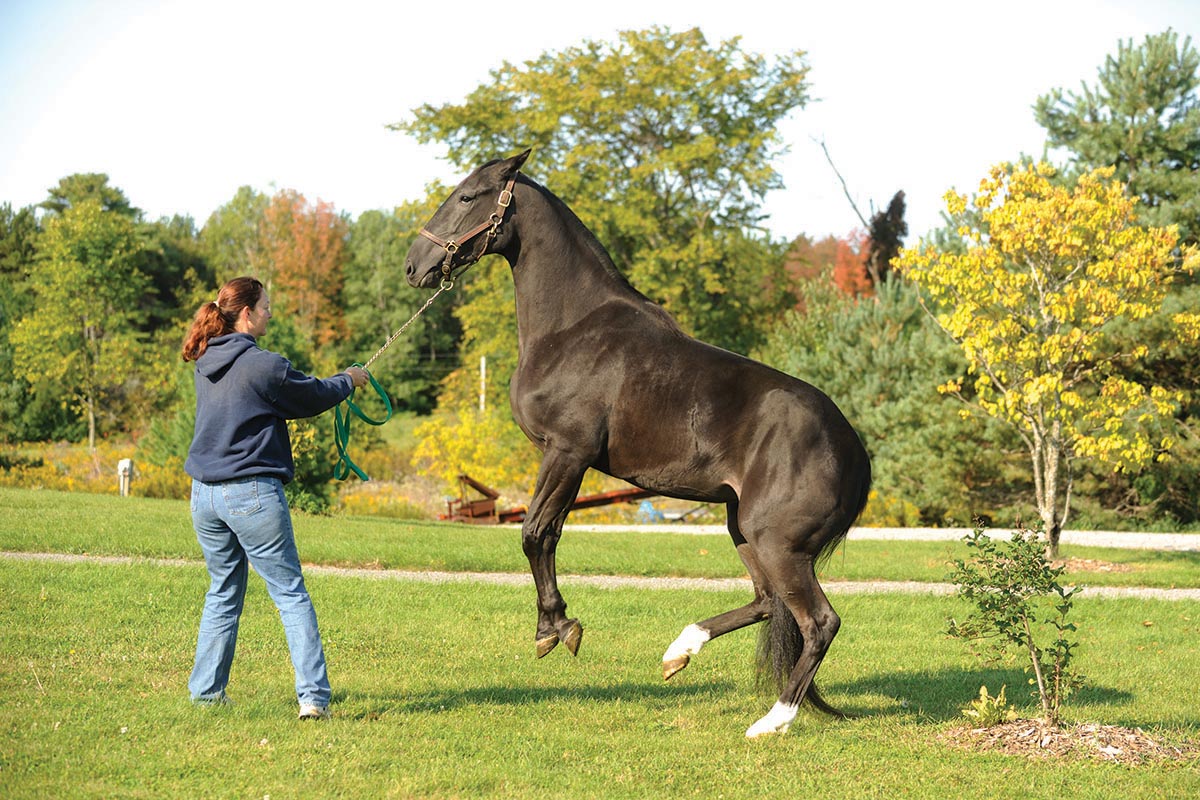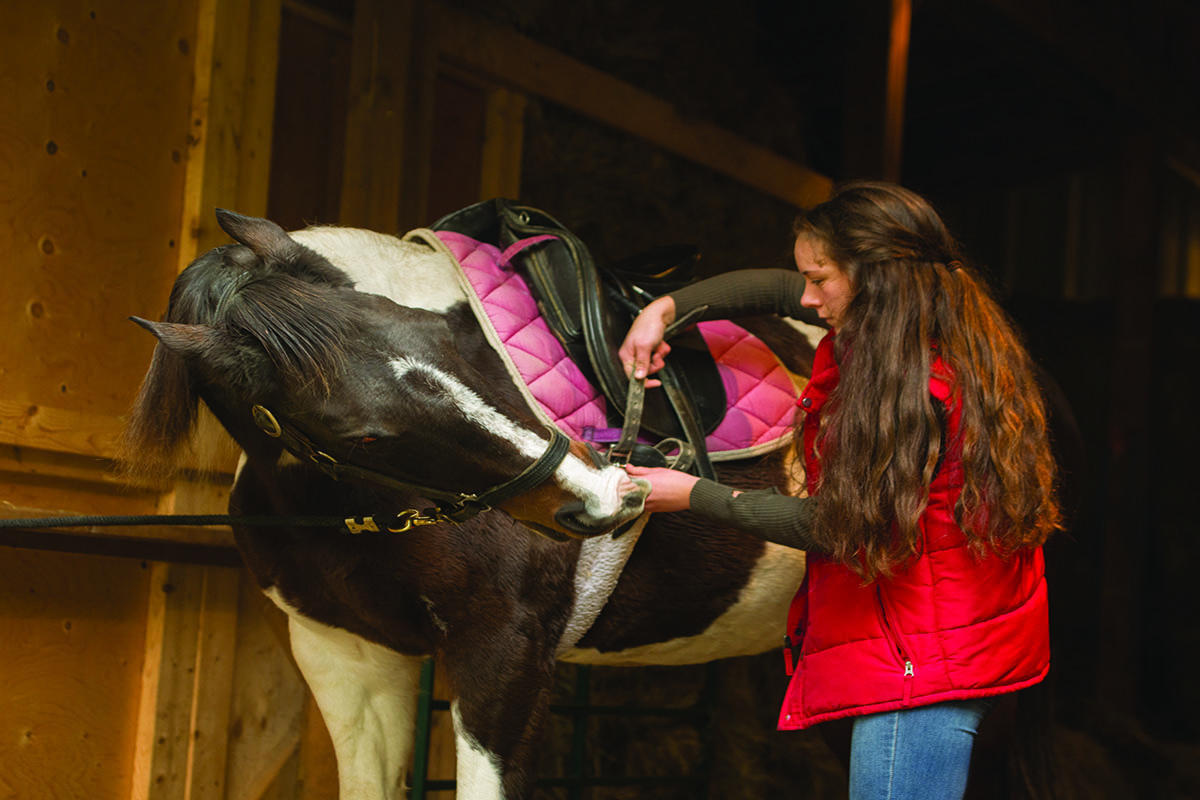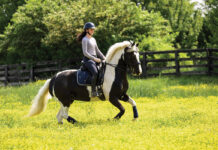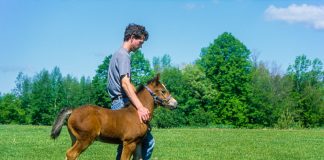Besides not being able to talk, horses are flight animals and have an instinctual ability to hide pain. So, how do horses communicate pain?

Case Studies
My three horses have all communicated pain to me in different ways, some obvious and others harder to detect. Bailey Girl, my American Paint Horse mare, is extremely thin-skinned—a field of long grass tickles her belly and makes her uneasy.
She is typically girthy, but at one point she tried to bite me when doing up her girth. In addition, when I lifted her front legs to pull the skin out from under the girth, she reared.
I touched her girth area, she was fine; ran my fingers down her back, no response. Was she just being cranky? Did she not want to be ridden, and if so, why?
An appointment with my equine massage therapist revealed she had sore shoulders, a place I didn’t even think to look. Her saddle was custom made for her, but as she aged, her shape changed. But arthritis in her knees was the No. 1 culprit.
The diagnosis from my equine masseuse, in consultation with the veterinarian:
Due to Bailey Girl’s arthritis in her knees, and lack of flexion in them, she has to lift more from the shoulders (trapezius and rhomboids) to clear the ground with her feet. This resulted in very tight shoulders and lower neck, which in turn caused rearing when the front feet were picked up too high and the knees flexed too much.
My Appaloosa gelding, Bailey Boy (yes, I ended up with two horses named Bailey), had a completely different way of communicating pain. On a typical day on the trails, Bailey wouldn’t mind if the herd was quite a distance ahead of him. Yet all of a sudden, he began to get anxious when they were more than three horse lengths away.
It turns out he was very sore in the spine and neck, an injury caused by a previous trailer accident. Now when he starts to worry about being with the herd out on a trail, I know it is time for his massage and/or chiropractic appointment, depending on the severity of the soreness.
Then there’s my big-boned guy Major, a Paint/Belgian-cross. Nothing seemed to bother him. He is thick-skinned and never cranky as long as his belly is full.
One day while being groomed, he began to nip or head-butt me whenever I walked in front of his chest area. I knew he was trying to tell me something, but I couldn’t figure it out.
After a visit from the massage therapist, it was revealed that he was sore in the sternum area. We had recently started him on small cavalletti training and cross-rails, which was causing muscle strain in that area.

The diagnosis from my equine masseuse, in consultation with the veterinarian:
Major’s snappiness around his sternum originated from the pectoralis and belly muscles being torn slightly from jumping. Due to his size and conformation, these muscles were over-taxed when he stretched out to clear the jumps.
A follow up with my equine chiropractor revealed the following:
Musculoskeletal variations, spinal misalignments. Tight bilateral pectorals. Decreased lateral flexion of the cervical spine right. Sternocostal ribs restricted left 4 and right 3.
Communicating Pain Under Saddle
This made me think about how many other ways horses communicate pain. Signs under saddle, like tail swishing, head tossing, skin twitching, hesitating or refusing fences, trouble bending in one direction, or trouble picking up or holding a lead can be construed as stubbornness, but perhaps we need to slow down and take a deeper look.
Linda Hauck, a lifelong horse woman and designer of the patented Spursuader Spur and Tapestry Comfort Girth, took pain in horses seriously.
“I invented the products to make horses more comfortable when being ridden,” she says. “They are ‘talking’ all the time about what we do with them and what we put on them. I thought about how to make the spur kinder but still effective, and how to make the girth more comfortable than a tight, leather belt so it could breathe with the horse but hold the saddle on securely.
“When a horse dances at the cross-ties or mounting block, he is anticipating pain,” Hauck continues. “Holding his head and neck higher than usual helps with the discomfort. Choppy, uneven movement throughout the ride, holding their breath at a canter, and having difficulty picking up a lead are all ways of communicating pain or discomfort. Rushing is often a key that they are running away from the discomfort of a saddle or girth.”
Keeping an Eye Out for Horses Communicating Pain
When not under saddle, horses can communicate pain by pacing, pawing, rolling or kicking at their sides, but less obvious signals, such as an unusual posture, depressed facial expression, pinched nostrils, sunken eyes or blinking or staring at a particular area can all be signs of pain.
In order to realize your horse’s early attempts to communicate pain, it’s a good idea to study his daily activity and normal routine. If your horse stops rolling in his favorite dirt pile, stands in the paddock with a lowered head, and decreases his normal activity, these can all be early signs of discomfort.
Go online for exercises to help sore or girthy horses with a certified neuromovement trainer at www.horseillustrated.com/working-with-pain.
This article about how horses communicate pain appeared in the July 2021 issue of Horse Illustrated magazine. Click here to subscribe!





